I would like to plot profile of rugosity (from AFM measurements) but there are still this that I misunderstand regarding the FFT (especially in Matlab documentation).
I want to compare two measurements, a.k.a. two rugosity profiles. They were done on the same surface, they only diverge on the fact that one is made on a shorter length than the other one. For each profile though, I have the same number of sample measures (N=512 here). Let's say these are my profiles, t10 and t100 being the x-abscisse along which the measure is made, and d10 and d100 being the vertical coordinate, a.k. the height of the measurement in the rugosity profile.
N=512;
t10 = linspace(0,10, N);
t100= linspace(0,100, N);
d10 = sin(2*pi*0.23 .*t10)+cos(2*pi*12 .*t10);
d100 = sin(2*pi*0.23 .*t100)+cos(2*pi*12 .*t100);
As it is the same surface that I measure but with different spatial resolution, i.e. different sampling period, the single-sided Amplitude spectrum of these rugosity profiles should overlap, shouldn't they?
Unlike what I should obtain, I have the following graphs:
 and
and

Using the following function:
function [f,P1,S1] = FFT_PowerSpectrumDensity(time,signal,flagfig)
H=signal;
X=time;
ell=length(X);
L = ell;% 2^(nextpow2(ell)-1) % Next power of 2 from length of the signal
deltaTime = mean(diff(X));
Fs=1/deltaTime; %% mean sampling frequency
%% Compute the Fourier transform of the signal.
Y = fft(H);
%% Compute the two-sided spectrum P2. Then compute the single-sided spectrum P1 based on P2 and the even-valued signal length L.
P2 = abs(Y/L); % abs(fft(signal Y)) / Length_of_signal
P1 = P2(1:L/2+1);
P1(2:end-1) = 2*P1(2:end-1);
f = Fs*(0:(L/2))/L;
if flagfig~=0
figure(flagfig)
loglog(f,P1)
title('Single-Sided Amplitude Spectrum of X(t)','FontSize',18)
xlabel('Spatial frequency f=1/\lambda (m^{-1})','FontSize',14)
ylabel('|P1(f)| (m)','FontSize',14)
end
S = (Y.*conj(Y)).*(2/L).^2; % power spectral density
S1 = S(1:L/2+1);
S1(2:end-1) = S1(2:end-1);
%% Power spectrum (amplitude = a^2+b^2), in length^2
if flagfig~=0
figure(flagfig+1)
loglog(f,S1)
title('Power spectrum','FontSize',18)
xlabel('Spatial frequency f=1/\lambda (m^{-1})','FontSize',14)
ylabel('(Y*2/L)^2 (m^2)','FontSize',14)
end
end
I call this function for instance using the following command:
[f10, S10]= FFT_PowerSpectrumDensity(t10, d10, 10);
Should I use L=2^pow2(ell)-1) ? I understood that it provides a better input to the FFT function? Also, I am quite unsure about most of the units and values I should find.
Thank you for your help, corrections and suggestions.
